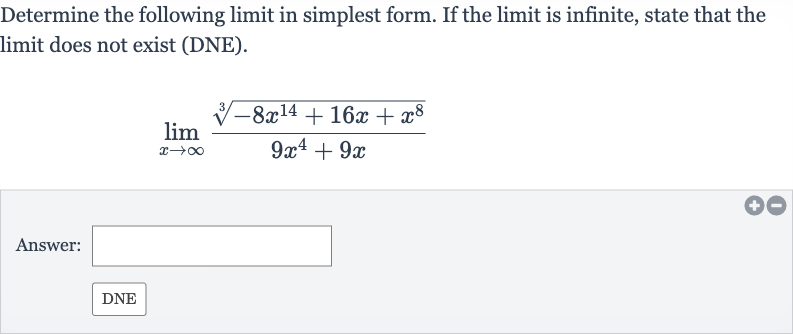Full solution
Q. Determine the following limit in simplest form. If the limit is infinite, state that the limit does not exist (DNE).Answer:
- Identify highest power: We are given the limit expression:To simplify this limit, we will first identify the highest power of in the numerator and the denominator.
- Divide by : The highest power of in the numerator inside the cube root is , and the highest power of in the denominator is . To simplify the limit, we will divide both the numerator and the denominator by , the highest power in the denominator.
- Factor out : We rewrite the limit expression by factoring out from the denominator and (which is ) from the numerator inside the cube root:
- Simplify inside cube root: Now we simplify the expression inside the cube root by dividing each term by :
- Ignore terms approaching zero: As approaches infinity, the terms , , and will approach zero. Therefore, we can ignore these terms for the limit calculation:
- Calculate cube root: The cube root of is , so the limit simplifies to:
- Simplify constant limit: Since is a constant, the limit as approaches infinity is simply:
More problems from Power rule
QuestionGet tutor help
QuestionGet tutor help
QuestionGet tutor help
QuestionGet tutor help
QuestionGet tutor help

